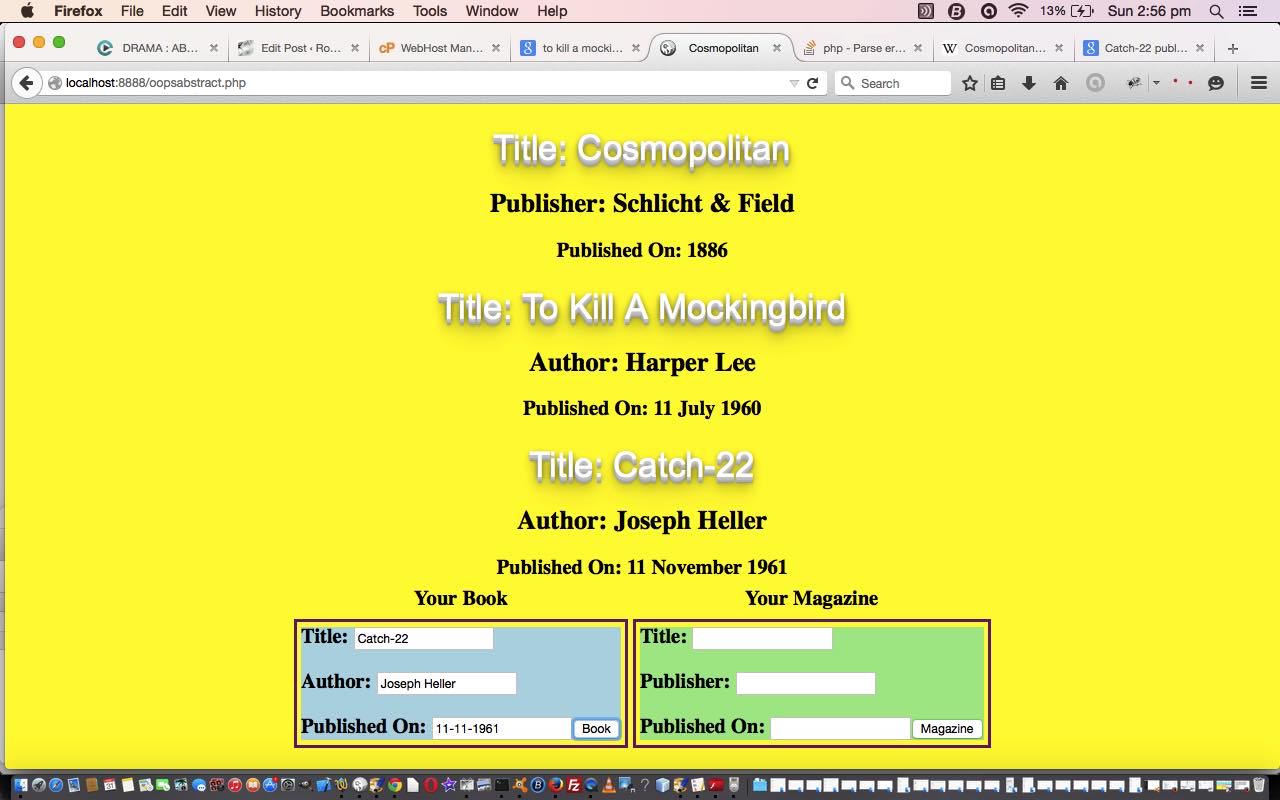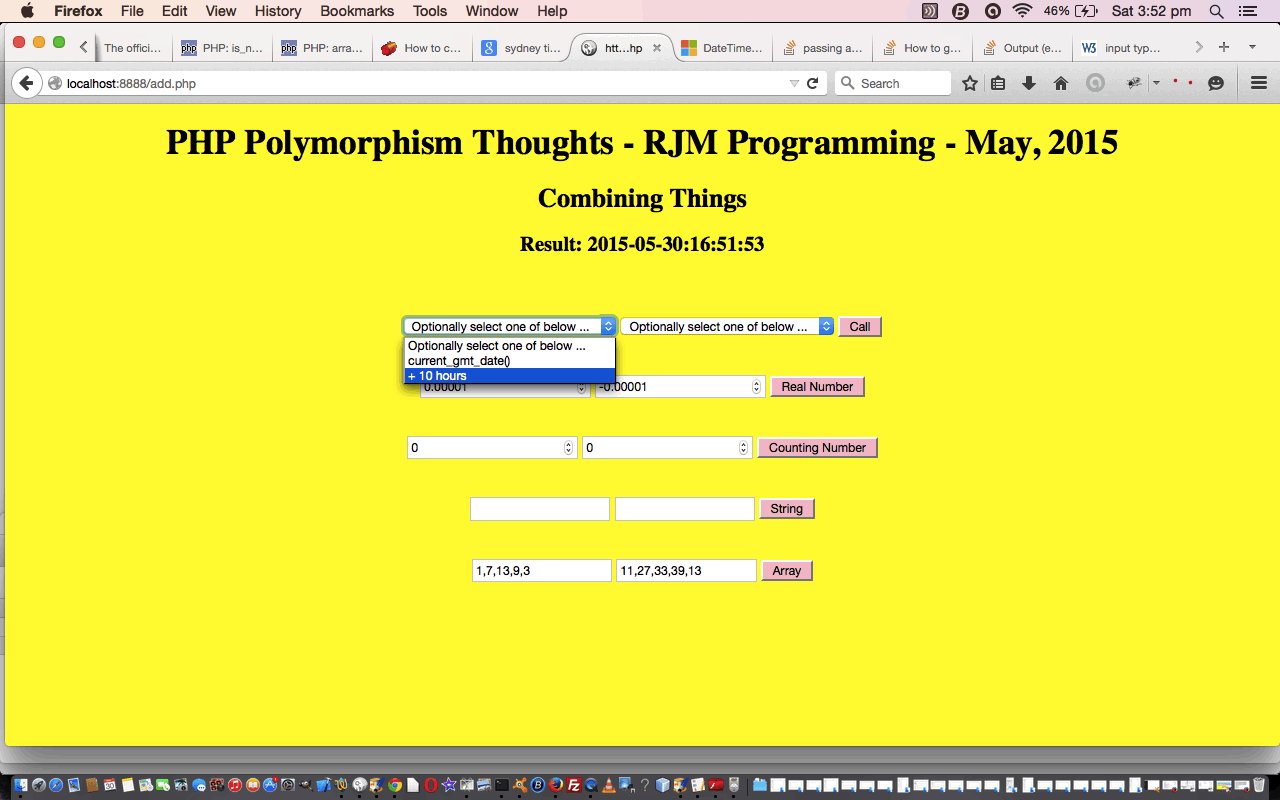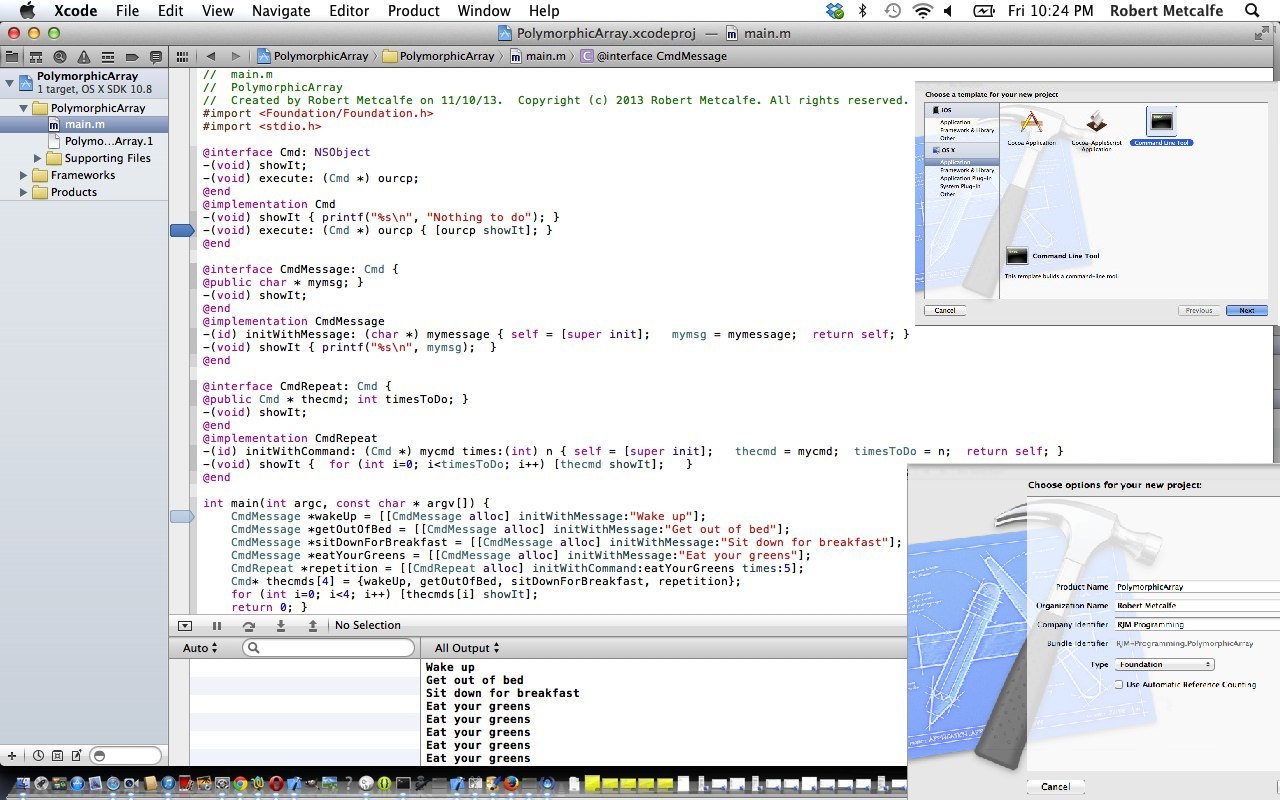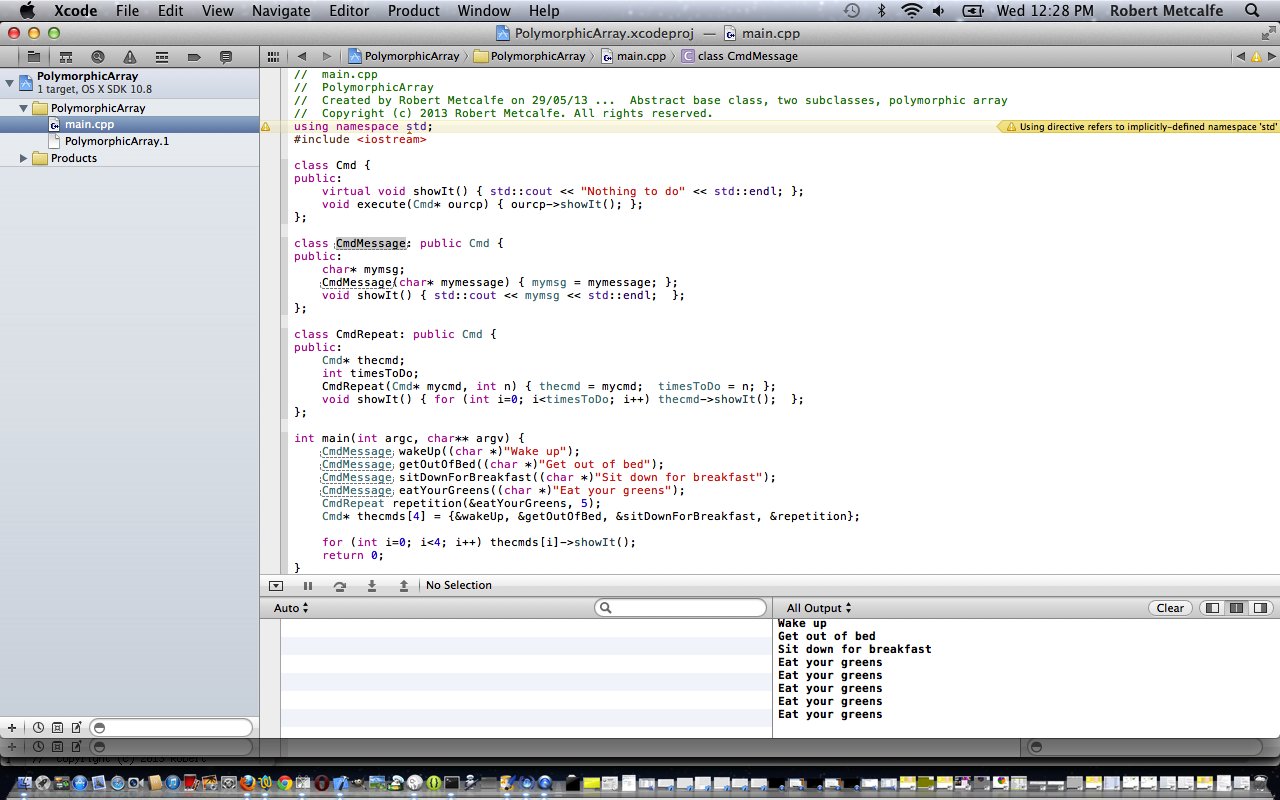PHP can be written with a functional approach or an Object Oriented (OOPS) approach, and today, we show some OOP approach ideas such as …
- an abstract class “via abstract class [className] { }“
- another polymorphic (syntax) idea “via public function __call() { }” (continuing on from yesterday’s Xcode Objective-C Polymorphic Array Primer Tutorial ideas)
- inheritance “via class [childClassName] extends [parentClassName] { }“
- constructor function “via function __construct() { }“
- class attributes “via function __get($name) { return $this->$name; } and function __set($name, $value) { $this->$name = $value; }“
- special function “via public function __autoload() { }“
- cloning objects “via syntax like $mypublication = clone $mybook;“
- destructor function “via function __destruct() { }” … that has nothing to do, as is often the case
We found the book “PHP and Web Development” by Luke Welling and Laura Thomson, chapter 6, very good for research purposes on this topic.
So for today’s PHP source code oopsabstract.php and its associated live run we have an abstract class called “publication” that helps out classes for “book” and “magazine” (because so much of these class’s functionality is the same, and so, can be more efficiently written into this abstract class, just the once), differentiating between the two by the idea a “book” has an “author” data member while a “magazine” has a “publisher” data member. Either can have a “published date” and we use some “polymorphic” approach to the month part of this date to allow a user to enter the second month of the year as “Feb” or “02” or “2” or “February” (for example). At the end we end up with one object called “$mybook” and one object called “$mymagazine”, and we clone “$mypublication” via “$mybook” to write out the interactive HTML form and footer parts of the web page this PHP creates.
Previous relevant PHP Polymorphic Thoughts Primer Tutorial is shown below.
We have mentioned the word “polymorphic” at this blog … and we weren’t sneezing m’lord … and you may wonder with the avid PHP fan base here why we don’t talk about “polymorphism” regarding PHP?
Or maybe not … but if you are still here … it is because PHP does not worry about the type of a variable in its function (or class’s method) parameter list … why should it? … it is sooooo generous … but seriously … you either like this, as you go through the world of programming and coding, or not … happens that I love it … because I like substitution and interpretation … but maybe you don’t … anyway … the cute “polymorphic” strengths of other OOP languages such as C++ (refer to Xcode Objective-C Polymorphic Array Primer Tutorial as shown below) is compensated, in a kludgy way, admittedly, with PHP, via the use of the family of functions like …
- is_callable() (or function_exists() or method_exists())
- is_numeric()
- is_string()
- is_array()
- is_bool()
The beauty and elegance of C++ about this is to be admired, but the brevity of PHP is also admirable, as one function, admittedly a long function/method can handle the whole shebang, given the right shebang’er, that it … just feel like saying “suffering succotash”.
Anyway, try out a live run or see the PHP source code you could call add.php
Hope you get a little bit of an inkling of a notion out of today’s thoughts.
Previous relevant Xcode Objective-C Polymorphic Array Primer Tutorial is shown below.
Have you heard of Objective-C? It is a great object-oriented programming language that builds that object orientation on top of a C programming base. Sounds good (even better than good), and Objective-C is the language of iOS Mobile Apps, so it is definitely in the category of up and coming programming languages. Let’s see what Wikipedia says about it below.
Objective-C is a general-purpose, object-oriented programming language that adds Smalltalk-style messaging to the C programming language. It is the main programming language used by Apple for the OS X and iOS operating systems and their respective APIs, Cocoa and Cocoa Touch.
Originally developed in the early 1980s, it was selected as the main language used by NeXT for its NeXTSTEP operating system, from which OS X and iOS are derived.[1] Generic Objective-C programs that do not use the Cocoa or Cocoa Touch libraries, or using parts that is ported or reimplemented for other systems can also be compiled for any system supported by GCC or Clang.
In this primer tutorial we see how Xcode can supervise an Objective-C Desktop Application project to define a Polymorphic Array, and call the methods this array points to.
Previous C++ XCode OOP Polymorphic Array Tutorial is of interest for compare and contrast purposes and is shown further below.
Regarding this Objective-C Polymorphic Array tutorial topic I really like “Objective-C” Visual Quickstart Guide by Steven Holzner.
Also like this link with regard to Polymorphic Arrays.
Here are links to programming source code which shows some use of a Polymorphic Array, which you should rename to main.m
Link to Objective-C more information … via Wikipedia, where quote above came from..
Previous C++ XCode OOP Polymorphic Array Tutorial is of interest for compare and contrast purposes and is shown below.
Here is a tutorial that introduces you to some more aspects of OOP … oops, forgot to say what OOP stands for … Object Oriented Programming … specifically regarding Polymorphic Arrays.
Object-oriented programming (OOP) is a programming paradigm that represents concepts as “objects” that have data fields (attributes that describe the object) and associated procedures known as methods. Objects, which are usually instances of classes, are used to interact with one another to design applications and computer programs.
To me, the beauty of OOP is that it can relate to the nouns in our life. Think of an object that you can touch, like a wristwatch … it has features like its type of design, its size, its weight (ie. its properties), and it has objects that go to make it up, like cogs and wheels (ie. its components), and it has its related classes of objects like clock, alarm clock, oven timer etcetera (ie. its characteristics), and its more fundamental essence, the class of watch (ie. its inheritance).
In this tutorial we touch on Polymorphic Arrays and the use of an Abstract Base Class and Two Subclasses which contribute to the types within this array. Has some similarities to MultiCulturalism perhaps?
Let’s see some C++ using XCode for this …
Link to Object Oriented Programming information … from Wikipedia from which quote above comes.
Link to Object Oriented Programming inventor information … Kristen Nygaard.
Also like this link with regard to Polymorphic Arrays.
Link to some downloadable programming code … rename to main.cpp for use.
If this was interesting you may be interested in this too.
If this was interesting you may be interested in this too.
If this was interesting you may be interested in this too.
If this was interesting you may be interested in this too.







7 Responses to PHP Abstract Class Primer Tutorial